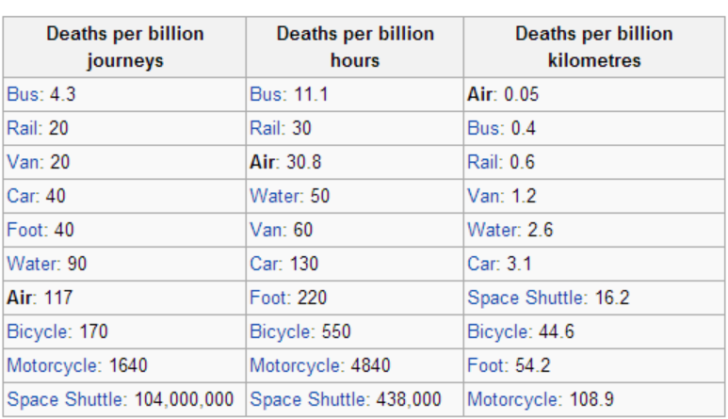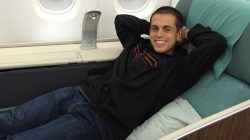Flying is something so many of us take for granted. Cheaper air fare today allows millions of people all around the world to fly from coast to coast, country to country, continent to continent, or city to city. Some flights are long and some flights are short. In spite of the length of a flight, flying has become one of the safest ways to travel. Despite this, further reflecting on the fragility of life that Matthew wrote about last week, I had my own interesting flight experience this week and I thought I would share it with my readers.
On March 19th, I was lucky enough to be in a confirmed business class ticket from Budapest to Los Angeles via London Heathrow. I was booked on American Air 137 from LHR in business class and was very excited to fly the new Boeing 777-300ER again from LHR-LAX. I had already flown this plane in main cabin extra from LAX-LHR and now I was going to indulge myself in a lay flat seat in business class. The flight went smoothly until we were over Canada and about 4+ hours from landing at Los Angeles. The inflight monitor read approximately 4.5 hours to LAX and an on time arrival, when my TV screen suddenly switched from the movie I was watching to an inflight public announcement flashing a big red emergency cross asking for medical personal to attend to an inflight medical emergency. Already in my scrub pants (as I fly in these as PJs), I jumped up and walked to the business class galley to ask the FAs what I could do. I was directed to the inflight purser who then took me back to the main cabin to assess a patient who was having an allergic reaction and suffering from a swollen tongue.
The patient was a middle age African gentle man who was traveling to Los Angeles from Nigeria. He already had had a very long day and throughout the flight was complaining about a sore throat to the FAs. This sore throat became a swollen tongue and that continued to grow larger throughout the flight. By the time the inflight medical emergency was announced, he could barely speak. The FAs were extremely helpful, brought me the inflight emergency kit and stayed with me when I assessed the customer’s (now, my patient’s) needs.
During moments of unexpected medical emergencies on flights, having access to well-equipped first aid supplies becomes paramount in ensuring the well-being of passengers. In this particular instance, the inflight medical professional was fortunate to have the support of the flight attendants and the airline’s emergency kit or you can check out online sites to have sufficient knowledge when emergencies might occur, you can also consider Obria Medical Clinics for your thorough approach when it comes to medical concerns.
The presence of essential medical provisions, such as E-First Aid Supplies, enables timely and effective responses to urgent situations, allowing medical personnel to address immediate needs. The availability of these well-stocked supplies contributes to the safety and care of passengers, highlighting the importance of preparedness and prompt assistance in mitigating health concerns during air travel.
Over the next three hours, I spent the majority of the flight with the patient assessing his condition and caring for my patient. The gentleman sitting next to him agreed to move to another seat and I was able to have a place to sit and work in the economy cabin. Thankfully, when I was first called to his attention, he was still able to swallow and I was able to get him some oral medical from the emergency kit. As we got closer to LAX, the situation worsened and when I tried to administer a second round of Benadryl, the poor gentleman was unable to swallow anything. My concern from the beginning was his airway, and now 1.5+ hour from LAX, I was getting extremely nervous as his tongue continued to swell. Due to this, I had IV medications in the kit ready to be administered if needed and had been in contact with on-call doctors from a renowned medical clinic, the pilot along with many FAs on board. If his breathing became difficult or airway obstructed, I was ready to act as I was prepared to start an IV, and proceed further with more advance medical treatment if needed. But the services of an emergency clinic is ultimately needed.
As we passed Las Vegas and still had about an hour in flight time due to holding patterns at LAX, my anxiety and fear of this patient’s condition continued to eat away at me, and I asked the purser to phone the pilot as I was concerned about this patient’s worsening conditions. I consulted with the pilot and asked him to declare an emergency and have medics meet the plane as the patient’s condition was getting worse and I was worried I was going to have to start an IV at 30,000 feet! Within 2 minutes, I was informed by the purser that an emergency landing was declared and we would be on the ground in 20 minutes. Suddenly that 4+ hours from when the call for a medic was announced to the time we were going to be on the ground at LAX was shortened to just 3.25 hours. It turns out the pilots increased our air speed due the situation (burning more fuel in sake of someone’s medical condition) and with the emergency declared we had priority landing at the runway closest to the AA gate-thus saving us time and allowing the patient to medical treatment faster.
Minutes before landing, the patient was moved to business class and I sat across from him near the closest two seats to door 2L, the door used by the air bridge. I continued to monitor the patient until we landed and then gave reports to the medics who took the patient off the plane and provided further treatment. The patient was still stable, airway still clear and all his vital signs stable and within normal limits. He was able to walk off the plane in order to receive further medical care.
Thankfully this gentleman lived, and we were able to get the plane to its scheduled destination without a diversion. I spoke with pilots about the possibility of a diversion earlier on when the situation was first playing out, but we had agreed not to divert unless respiration problems became apparent. The fact is though; being stuck at 30,000 feet with limited medical supplies is a scary situation. I am a licensed nurse in California and Washington states and I thankfully had my licensure on me to prove my credentials to the staff on board. Despite being an RN, I haven’t worked in an Emergency Room for over 3+ years as I now work in I.T. on electronic health care records for hospitals and I really had to rack my brain to recall treatment options, after all it has been over three years since I have worked at the bedside. The FAs were surprised that there were no other medical professional on board as they said often times there are doctors or multiple nurses on board. However, on the 19th, I was the only medical professional on board and despite being rusty I was willing to help.
This entire situation reminded me how fragile our lives are. Air travel is extremely safe, but when something goes wrong at 30,000 feet, options become extremely limited. Just this week, an elderly lady died from Puerto Rico to Miami on an American Air flight after she was found nonresponsive and couldn’t be revived by emergency personal. And let us not forget the Malaysian Airline flight 370 tragedy, regardless of this planes disappearance looking more and more deliberate each day¸ it just further proves how few options we have at 30,000 feet when we have limited options and resources and our lives as truly in someone else’s hands.
So how safe is air travel? Per Wikipedia per every billion Kilometers it’s the safest! After all when home I drive a motorcycle and have no car. Thankfully I travel more by plane the motorcyle each year!

Finally, I would personally like to thank everyone on AA137 from London on March 19 for your cooperation during the inflight medical emergency. Fellow passengers were helpful by remaining seated when we landed allowing EMTs to board and by keeping the aisles clear while I was going back and forth between cabins and to the inflight phone. A big thanks to the cabin crew and pilots for helping coordinate care and declaring the emergency so the gentleman could get care sooner. Lastly, big thanks to the people sitting around this man, who gave up their own comfort so he could be cared for! And to all my reader, I wish you safe travels!


